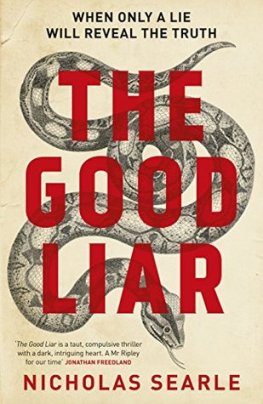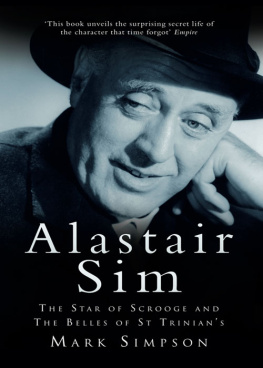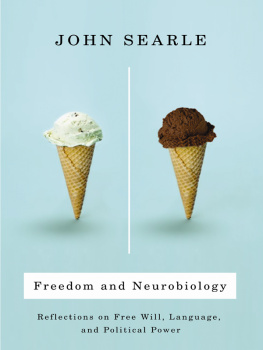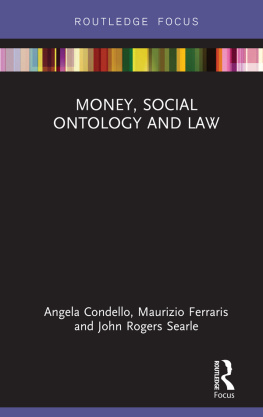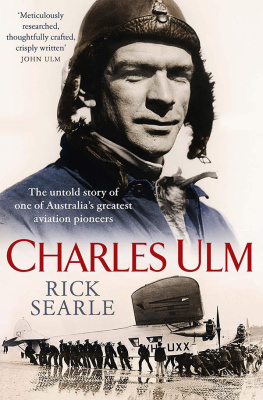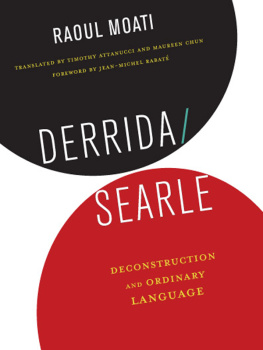Ronald Searle - The Terror of St Trinians and Other Drawings
Here you can read online Ronald Searle - The Terror of St Trinians and Other Drawings full text of the book (entire story) in english for free. Download pdf and epub, get meaning, cover and reviews about this ebook. year: 2006, publisher: Penguin Group, genre: Art / Computer. Description of the work, (preface) as well as reviews are available. Best literature library LitArk.com created for fans of good reading and offers a wide selection of genres:
Romance novel
Science fiction
Adventure
Detective
Science
History
Home and family
Prose
Art
Politics
Computer
Non-fiction
Religion
Business
Children
Humor
Choose a favorite category and find really read worthwhile books. Enjoy immersion in the world of imagination, feel the emotions of the characters or learn something new for yourself, make an fascinating discovery.

- Book:The Terror of St Trinians and Other Drawings
- Author:
- Publisher:Penguin Group
- Genre:
- Year:2006
- Rating:4 / 5
- Favourites:Add to favourites
- Your mark:
- 80
- 1
- 2
- 3
- 4
- 5
The Terror of St Trinians and Other Drawings: summary, description and annotation
We offer to read an annotation, description, summary or preface (depends on what the author of the book "The Terror of St Trinians and Other Drawings" wrote himself). If you haven't found the necessary information about the book — write in the comments, we will try to find it.
The Terror of St Trinians and Other Drawings — read online for free the complete book (whole text) full work
Below is the text of the book, divided by pages. System saving the place of the last page read, allows you to conveniently read the book "The Terror of St Trinians and Other Drawings" online for free, without having to search again every time where you left off. Put a bookmark, and you can go to the page where you finished reading at any time.
Font size:
Interval:
Bookmark:
PENGUIN BOOKS The Terror of St Trinians and Other Drawings Ronald Searle was born in Cambridge in 1920 and was educated there at the Cambridge School of Art. On the outbreak of the Second World War he left his studies to serve in the Royal Engineers and in 1942 was captured by the Japanese at Singapore, then held by them for three and a half years. He is hugely successful graphic artist and pictorial satirist. As well as his collaboration with Geoffrey Willans on the Molesworth books and his invention of St Trinians, his work has been the subject of numerous exhibitions across the world and appears in several major American and European collections. He moved to Paris in 1961 and then, in 1975, to a remote village in Haute-Provence, where he still lives. Nicholas Lezard was born in London in 1963.
He was Literary Editor of the Modern Review, and writes every week on books for the Guardian and on radio for the Independent on Sunday. RONALD SEARLE
 PENGUIN BOOKS PENGUIN BOOKS Published by the Penguin Group
PENGUIN BOOKS PENGUIN BOOKS Published by the Penguin GroupPenguin Books Ltd, 80 Strand, London WC2R 0RL, England
Penguin Group (USA) Inc., 375 Hudson Street, New York, New York 10014, USA
Penguin Group (Canada), 90 Eglinton Avenue East, Suite 700, Toronto, Ontario, Canada M4P 2Y3
(a division of Pearson Penguin Canada Inc.)
Penguin Ireland, 25 St Stephens Green, Dublin 2, Ireland (a division of Penguin Books Ltd)
Penguin Group (Australia), 250 Camberwell Road, Camberwell, Victoria 3124, Australia
(a division of Pearson Australia Group Pty Ltd)
Penguin Books India Pvt Ltd, 11 Community Centre, Panchsheel Park, New Delhi 110 017, India
Penguin Group (NZ), cnr Airborne and Rosedale Roads, Albany, Auckland 1310, New Zealand
(a division of Pearson New Zealand Ltd)
Penguin Books (South Africa) (Pty) Ltd, 24 Sturdee Avenue, Rosebank, Johannesburg 2196,
South Africa Penguin Books Ltd, Registered Offices: 80 Strand, London WC2R 0RL, England www.penguin.com This selection first published 2000
Published in Penguin Classics with additional material 2006
1 Copyright 1948, 1951, 1952, 1953, 1954, 1955, 1956 by Ronald Searle
Copyright Ronald Searle, 1959
This selection copyright Ronald Searle, 2000, 2006
Introduction copyright Nicholas Lezard, 2000
All rights reserved The moral right of the author has been asserted Except in the United States of America, this book is sold subject to the condition that it shall not, by way of trade or otherwise, be lent, re-sold, hired out, or otherwise circulated without the publishers prior consent in any form of binding or cover other than that in which it is published and without a similar condition including this condition being imposed on the subsequent purchaser ISBN: 978-0-14-191285-1
The Molesworth drawings are taken from Down With Skool! (1953), How to be Topp (1954), Whizz for Atomms (1956), The St Trinians Story (1959) and Back in the Jug Agane (1959), all with text by Geoffrey Willans. The Rakes Progress (1955) is reproduced in its entirety.
We need hardly explain or apologize for their inclusion; but that we felt they had to go in, despite being duplicated elsewhere, says something about his appeal, the deep furrows he has made in the national consciousness. Most people under forty came to Searle through the four Molesworth books, his incredible collaboration with Geoffrey Willans, the novelist, teacher and wartime RNVS officer who found, in the depiction of the truculent, philosophical and rebellious schoolboy (a kind of Diogenes in shorts, with beetles doodled on his knees), his finest and most enduring creation. I first came to them as a schoolboy in the sixties and early seventies, in a prep school still faintly redolent of the cabbage-and-carbolic atmosphere of St Custards. What struck me at the time was that the book was hardly an act of imagination; it was a documentary. We made allowances for the passage of history the school was for day-bugs only, no one said cave at the approach of authority, and not all the masters were quite as demented but the mise-en-scne was highly recognizable, authentic; we may even have willed our school to be a little more like St Custards than it actually was, forcing life to live up to the world of art. Much of Willanss linguistic exuberance passed us by as far as we were concerned, he spelt strubres more or less correctly but it was Searles illustrations that sealed the matter for us.
For there, right on the page, was an example of how we felt we might be able to draw, had we the application or the energy. He was so expert and painstaking that we hardly recognized how expert and painstaking he was. He had managed to climb into a childs mind strictly speaking, a boys mind and pull out our weirdest yet, at the same time, most standard imaginings. Most importantly, perhaps because we could see that he was not condescending, did not appear to be artistically slumming it, we knew at once that he was on our side, in that seemingly endless attritional war between adults and ourselves. If Willans exposed the grown-up world as a conspiracy against youth and an inept and pointless conspiracy at that then Searles illustrations confirmed it, pitilessly, and in a visual language that we immediately understood. It is also perhaps necessary to remind people now how rare it once was for schoolbooks to be illustrated, unless incompetently or emetically; and the molesworth books, which were, in a sense, schoolbooks, were more than just illustrated.
Searles contribution was not so much integral as essential for their success. The Molesworth cycle burgeoned manically and generously with drawings, satisfying the schoolboys craving for release from the tyranny of linear print. And the drawings were not dependent on the text; sometimes it seemed the other way round. There is no textual authority for many, if not most, of the illustrations; the word illustration is, in this context, misleading. The molesworth-headed spider (closer and closer, crept the ghastly THING) just leaps into the book, as a boys vicious daydream interrupts a period of great tedium, most typically, as I recall, Latin lessons. The grate latin lies, also an autonomous series of cartoons, said not only all that needed to be said about the supposed classical ideal, they also said everything that needed to be said about the timelessly disappointing nature of the human condition.
Take All the romans loved home, with the browbeaten centurion still in his armour, the mocking image of an authority he can never command in his own home, the wife yelling at some prior incompetence or dereliction, the child crying at some prior and presumably imaginary or trifling injustice, even the dog pinching his dinner; the mans resigned, exhausted slump not only that of someone trapped in history, but a horribly proleptic vision of the destiny that awaited those foolish enough to grow up. It told us all, in the blink of time it took the eye to register the details, what was wrong with the nuclear family, the thankless tedium of duty, at the same time as the conventional culture all around sang the praises of the homestead. It was a highly concentrated and dyspeptic sitcom, but and this is the mystery and spirit of cartoon art it was still funny. It made me laugh then, and, now that I am however strangely happily in that centurions caligulae, more or less, it makes me laugh even more. But when young, in those days, one felt that merely to hold a book with such a number of illustrations was a signal of rebellion in itself; we felt obscurely that Searles drawings begged authoritarian disapproval simply by existing in such profusion. That they also flayed their subjects with a merciless and unforgiving line both grotesque and precise, one never looked at the world the same way after his illustrations as one did before made it all the better.
Font size:
Interval:
Bookmark:
Similar books «The Terror of St Trinians and Other Drawings»
Look at similar books to The Terror of St Trinians and Other Drawings. We have selected literature similar in name and meaning in the hope of providing readers with more options to find new, interesting, not yet read works.
Discussion, reviews of the book The Terror of St Trinians and Other Drawings and just readers' own opinions. Leave your comments, write what you think about the work, its meaning or the main characters. Specify what exactly you liked and what you didn't like, and why you think so.

